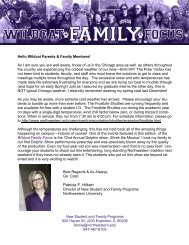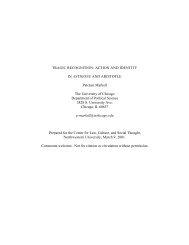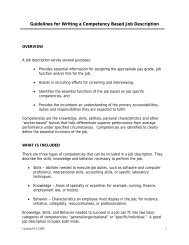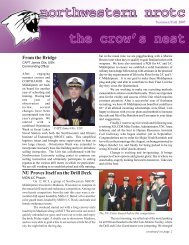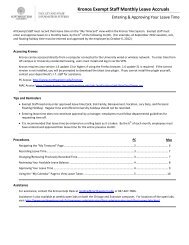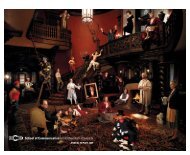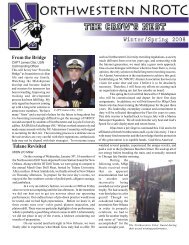Artistry Permits and Custom May Ordain - Northwestern University
Artistry Permits and Custom May Ordain - Northwestern University
Artistry Permits and Custom May Ordain - Northwestern University
You also want an ePaper? Increase the reach of your titles
YUMPU automatically turns print PDFs into web optimized ePapers that Google loves.
14<br />
therefore, that by the end of the fifteenth century a discontinuous but coherent linguistic<br />
community had emerged over long stretches of the East African coast as far south as<br />
Inhambane. Close ties between Swahili-speaking areas bolstered a linguistic <strong>and</strong> material<br />
community over time, <strong>and</strong> archeological findings, when joined to the linguistic record, add<br />
much weight to the theory of an interconnectedness among all points on the Swahili<br />
continuum.<br />
Archeological excavations on the East African coast have yielded findings that seem<br />
to point to a communality of material consumption. The evidence includes ceramics,<br />
items of personal adornment, <strong>and</strong> building material, as well as similar forms of<br />
architectural design, decoration, <strong>and</strong> spatial organization. The production <strong>and</strong><br />
consumption of ceramics <strong>and</strong> architecture are perhaps the most striking indicators of<br />
material <strong>and</strong> aesthetic networks on the early East African coast. Pottery excavated from<br />
sites as seemingly disparate as Chibuene in the south of modern Mozambique, Domoni in<br />
the Comoros, <strong>and</strong> M<strong>and</strong>a in the Lamu archipelago shows striking similarities in form, use,<br />
<strong>and</strong> production technique. 34 Indeed, much of the coast shares a common ceramic<br />
tradition. 35 This “vast sphere of ceramic communality,” in Wright’s words, may not<br />
denote homogeneity from very early periods, but it does at least imply either the exchange<br />
of materials over a considerable distance or the movement of craftspeople. Certainly,<br />
commercial networks in the fifteenth century were sufficiently integrated to sustain<br />
Liesegang’s assertion that shards found in Sofala are imports from a more northerly part of<br />
the coast. 36 According to early Portuguese sources, certain towns or regions specialized in<br />
the production of material goods, as I shall examine below, 37 <strong>and</strong> this applied to<br />
34 H. Wright, “Trade <strong>and</strong> Politics on the Eastern Littoral of Africa, AD 800-1300,” in The Archaeology of Africa:<br />
Food, metals <strong>and</strong> towns. Eds. T. Shaw et al. London, 1993. 660. Wright notes that the common elements of these<br />
wares are ring-built restricted jars or pots with scraped surfaces <strong>and</strong> often decorated with zigzag or triangular<br />
incised motifs, as well as ring-based bowls with in-turning rims with red-slipped burnished surfaces with regular<br />
silvery graphite decorations. cf. P. Sinclair, “Chibuene—An Early Trading Site in Southern Mozambque,”<br />
Paideuma. 28 (1982): 51-65; <strong>and</strong> R. Dickenson, “Archeological Investigations as Nova Mambone, Moçambique,”<br />
Monumenta. 7 (1971): 23-7.<br />
35 Though northwestern Madagascar might not share a common ceramic tradition with the Swahili world, other<br />
material items, like building materials <strong>and</strong> architectural styles, mirror those on the East African coast. Vernier <strong>and</strong><br />
Millot, Archéologie Malagache; <strong>and</strong> P. Verin, The History of Civilisation in North Madagascar.<br />
36 G. Liesegang, “Archaeological Sites on the Bay of Sofala,” Azania. 7 (1972): 154.<br />
37 Examples include cloth in the Kirimba Archipelago, iron in Mombasa, ocean-going vessels in Mozambique<br />
Isl<strong>and</strong>, <strong>and</strong> raffia household wares in the Comoros. De Monclaro, 348. For an excellent ethnoarcheological study<br />
of iron production see C. Kusimba, “The Social Context of Iron Forging on the Kenya Coast,” Africa. (66) 3<br />
(1996): 386-409.



